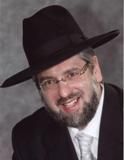 By Rabbi Pinchos Lipschutz
By Rabbi Pinchos Lipschutz
Purim is the one holiday that celebrates a miracle that occurred during exile. It is the only neis that took place after Matan Torah outside
of Eretz Yisroel that is commemorated as a major Yom Tov. The riveting events of Purim therefore speak to us in a language that has a special resonance, especially in an age when the need for salvation on so many levels is so acute.
Shoshanas Yaakov. Klal Yisroel is compared to the rose, a beautiful flower surrounded by thorns. We, too, feel the stab of thorns wherever we turn in our two-thousand-year exile. Yet, the analogy to a rose goes deeper. As long as the rose remains attached to the branch, it is protected from the thorns, and it retains its beauty, its freshness and its vitality. The thorns have a protective quality, preventing the rose from being easily severed or consumed.
So, too, the Jewish people. Once we remove ourselves from the tree of Torah which has sustained our people for millennia, we open ourselves up to the dangers of being ripped apart by destructive forces seeking our downfall. Yet, as long as we remain on the branch, the very thorns that can shred us also serve to protect us from annihilation, by reminding us of who we are and compelling us to stay connected to our source.
Our enemies who seek our ruin constantly remind us of our heritage as they seek to prevent us from becoming too entangled with them. The thorns, and our tormentors, bring us together and bring out the best in us. We don’t recognize our strength until outside factors attack one of us and we band together to defend our own.
And thus we sing, “Shoshanas Yaakov tzahalah vesomeichah.” The rose of Yaakov Avinu, the remnant of the glorious heritage of vitality and beauty, was able to overcome the lethal thorns of Haman and Amaleik. The legacy of those events became a watershed of hope and inspiration for Jews throughout centuries of persecution, in every corner of the globe.
The message it carries is as alive and relevant as ever. Our standard of living may be higher. We may seem to be better off than our grandparents. But we suffer other afflictions. There are so many areas in which we are hurting. The economic situation in this country is in shambles and the current administration doesn’t seem to be able to right the ship. Too many people are unemployed or working at jobs for which they are overqualified and underpaid. The incomes aren’t able to keep pace with the expenses.
Yeshivos and charity institutions go begging and are hanging on by a thread. People have difficulty paying yeshiva tuitions and the schools are unable to properly pay the rabbeim and teachers.
We are a generation orphaned by the passing of those rare “Mordechais” of our people who stood in the breach. In their absence, the generations grow weaker.
What are we to do? Purim’s message to the Jews of all time is to never surrender to despair, to keep our grip on faith, and to trust that Hashem will save His beloved children.
The Jews of Shushan had begun to feel that all hope was lost. The lot was drawn and their fate was sealed. Mordechai and Esther taught them the power of prayer and fasting. They rose to the challenge, and thanks to the leadership of Mordechai and Esther, G-d heard their tefillos and accepted their teshuvah. A day marked for sadness and death was transformed into a day of celebration and deliverance.
It is written in the sefer Kav Hayoshor [Chapter 97} that anyone who needs rachamei Shomayim should set aside time on Taanis Esther to say kapittel 22 in Tehillim. It begins with the words, “Ayeles Hashachar,” a reference to Esther Hamalkah. Upon completing that kapittel, one should pour his heart out to Hashem and mention the zechus of Mordechai and Esther. In the merit of these tzaddikim, Hashem will respond and open the gates of rachamim.
When we say in the pizmon of Shoshanas Yaakov that “sikvosom bechol dor vador,” we are saying that Purim teaches us to sustain hope and to pray with broken hearts to Hashem in every generation, whenever we are threatened by evil.
The Alter of Kelm wrote in a letter that we should say Shoshanas Yaakov all year round and not only on Purim. The lesson that a Jew who places his faith in Hashem will be saved is applicable not only on Purim, but on every day of the year as well.
Esther sent a message to the Chachomim, asking, “Kisvuni ledoros – Transcribe the tale of the miracle of Purim for future generations” (Megillah 7a). Esther, who the Gemara (Chullin 139b) states is hinted to in the Torah in the posuk, “Ve’anochi hastir astir – I [Hashem] will hide Myself.” This is more than a simple play on words. It is a reference to the period during which Esther Hamalkah lived and the miracle in which she played such a seminal role.
Esther, who was a prophetess, perceived that the miracle in Shushan was unprecedented. She thought that it would lead to a return of the Jews to Eretz Yisroel and a rebuilding of the Bais Hamikdosh. But she also saw that the Jews were destined to return to exile and live for many years in a matzav of hastir astir, when Hashem’s “Face” would be hidden from them.
She saw that throughout the ages, the Jews would repeatedly be threatened with annihilation. She understood that they would require a means of fortifying their spirits to enable them to persevere despite their travails. Thus, she reached out to the Chachomim and requested that the megillah depicting the story of the Jewish people’s salvation in golus through hidden Divine intervention be transcribed, in order to inspire her people in times to come.
Esther worried about Jews in the periods of hester, and Chazal saw the reference to her through the posuk of hastir astir. She worried about Jews who, centuries later, would need an infusion of emunah and bitachon to be able to withstand the nisyonos that threaten them.
In order to merit redemption, we must be united as were the Jews of Shushan. As long as we are separated and splintered, the kitrug of Amaleik is upon us. We are only strong and able to defeat our oppressors when we act as one people, not as disparate groups, each pulling in a different direction.
Achdus requires us to recognize that there is more than one legitimate understanding of Torah. Shivim ponim laTorah. Divergent customs handed down through the ages due to the wandering of the Diaspora should be respected. Every valid path that reaches the same destination has legitimacy. All paths join as a mega-highway ascending to Heaven.
The posuk in Megillas Esther (3:8) describes the situation among the Jews of the time of the gezeirah as “mefuzar umeforad,” scattered and splintered. The salvation arrived after Esther pleaded with them to become unified, to become bonded to one another in one cohesive group. That call for solidarity – “leich kenos es kol haYehudim (4:15) – was heeded by the entire nation, who engaged in fasting and teshuvah and poured out their hearts tefillah.
We seek to foster that unity on Purim day, when the spiritual energy of the miracle that took place in Shushan 2,366 years ago is the strongest. Thus, we undertake activities that bring about a spirit of brotherhood, such as mishloach manos, matanos la’evyonim, reading the megillah communally, and gathering with family and friends for a large festive meal that, if possible, should include the poor and downtrodden.
We engage in actions which remind us not to judge people by their looks, and to peer beyond the surface, into the soul. We masquerade about, symbolic of our golus wanderings, from one side of town to the other, and then back again, with our faces painted and covered and our clothing a bit bizarre, as we reach out to strangers and friends with Purim cheer.
We think of the less fortunate and seek to brighten their lives. We pray that in the merit of our kindness to fellow Jews, Hashem will show us mercy and hasten our personal redemption.
Let us try to put behind us the pettiness and small-mindedness that divide us and rally together for important causes to help people in need. Let us try to spread simcha and sasson wherever we can, by being besimcha ourselves, and not yielding to bleakness, irritability, self-absorption and fatalism. Not only on Purim, but all year round as well!
Ah freilichen Purim.
{Matzav.com Newscenter}












Is this website affiliated with the American Yated?
Of course it is it is owned by the yated just they can’t have a website because the internet is banned